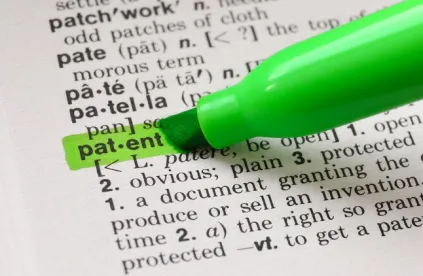The USPTO has published proposed guidelines on the types of courses and activities that will qualify for USPTO CLE credit, which practitioners may voluntarily report in the mandatory biennial registration statements that will be required beginning March 1, 2022.
Mandatory Biennial Registration Statements, But Not Mandatory CLE
The final rules package published August 3, 2020 included changes to 37 CFR part 11, relating to practice before the USPTO that will require registered practitioners to file, on a biennial basis, “a registration statement … for the purpose of ascertaining whether such practitioner desires to remain in an active status.” Failure to file a registration statement may result in administrative suspension, i.e., loss of authorization to practice before the USPTO.
The final rules package also provides that registered practitioners may certify that they have completed voluntary “USPTO CLE credits,” and that the USPTO may publish whether practitioners have done so in its on-line practitioner directory.
As set forth in new 37 CFR § 11.11(a)(3):
A registered practitioner, or person granted limited recognition under § 11.9(b), who has completed, in the past 24 months, five hours of continuing legal education credits in patent law and practice and one hour of continuing legal education credit in ethics, may certify such completion to the OED director.
As set forth in 37 CFR § 11.11(a)(1):
The OED director may … publish the continuing legal education certification status of each registered practitioner, or person granted limited recognition under § 11.9(b).
Thus, under the final rule changes, earning and reporting 5+1 hours of USPTO CLE credits is voluntary, but the USPTO seeks to encourage practitioners to do so by publicly recognizing those who do.
Confirming the voluntary nature of the USPTO CLE credits, the October 9, 2020 Federal Register Notice expressly states:
No practitioner or person granted limited recognition pursuant to 37 CFR 11.9(b) is required by the USPTO or the OED to complete CLE credits.
In the October 9, 2020 Federal Register Notice, the USPTO solicits input on how it should recognize practitioners who certify completion of the 5+1 hours of USPTO CLE credit. The notice proposes to do so by including a notation in the practitioner's profile:
This practitioner has certified completion of six credits of continuing legal education within the previous 24 months.
Guidance And Requested Input On USPTO CLE Credits
Notwithstanding the voluntary nature of the USPTO CLE credits, the October 9, 2020 Federal Register Notice outlines proposed guidelines on the types of courses and activities that will qualify, and seeks public input on several issues.
For suitable topics for “patent” CLE credit, the guidelines draw on the topics set forth in 37 CFR 11.5(b)(1), including:
- Preparation and prosecution of patent applications
- Consulting with or giving advice to a client who is contemplating filing a patent application or other document with the Office, including considering the advisability of relying on alternative forms of protection that may be available;
- Drafting a specification of claims of a patent application
- Drafting an amendment or response to an Office communication
- Determining and rendering opinions on patentability
- Drafting documents to be presented in any patent-related proceeding before the USPTO, including proceedings before the PTAB
- Drafting an assignment of rights in an issued patent, patent application, or in contemplation of the filing of a patent application
- Litigation that pertains to the topics listed in 37 CFR 11.5(b)(1).
As noted in the guidance, the USPTO itself offers free CLE programs, although no upcoming programs are currently listed on the USPTO’s CLE program webpage. The USPTO seeks input on whether it should provide a mechanism “for approval of courses by non-USPTO providers,” and “the specific method by which the USPTO could review and approve such courses.”
With regard to “ethics” CLE credit, the guidelines state that “any CLE course that has been approved by any state bar for ethics credit” can be attended for credit. The guidelines elaborate that acceptable courses “will pertain to a practitioner's obligations under the USPTO Rules of Professional Conduct, including a practitioner's obligations under such rules to clients; prospective clients; and/or the USPTO, courts, and other legal institutions.”
Consistent with 37 CFR 11.11(a)(ii), up to two hours of “patent” CLE credit can be earned “by providing patent pro bono legal services through the USPTO Patent Pro Bono Program,” with three hours of patent pro bono legal service earning one hour of CLE credit. The guidelines also propose that up to two hours of credit could be earned by:
- taking part in a law school clinic that participates in the USPTO Law School Clinic Certification Program
- speaking at a USPTO-accredited CLE course or preparing written materials for such a CLE course (but not both)
- writing, as an author or co-author, materials published in the form of an article, chapter, or book that contributed substantially to the continuing legal education of the author or co-author and other practitioners
- teaching, lecturing, or speaking on (1) legal ethics, or (2) patent law and practice …in the position of a part-time faculty member in any law school accredited by the American Bar Association
Related to these activities, the USPTO “invites comments on whether a practitioner may earn income and CLE credits simultaneously (for example, if a practitioner is paid for a speaking engagement on a CLE-eligible topic).”
Provide Your Comments
You can provide written comments on the proposed USPTO CLE credit guidelines by email to CLEguidelines@uspto.gov. (The USPTO requests comments be submitted by January 7, 2021.) In view of the voluntary nature of the USPTO CLE credits, I expect most comments to come from entities who currently offer patent-related CLE courses, proposing how the USPTO could approve their courses for USPTO CLE credit. However, all interested practitioners should let their views be known to help the USPTO successfully implement this program.




 />i
/>i


